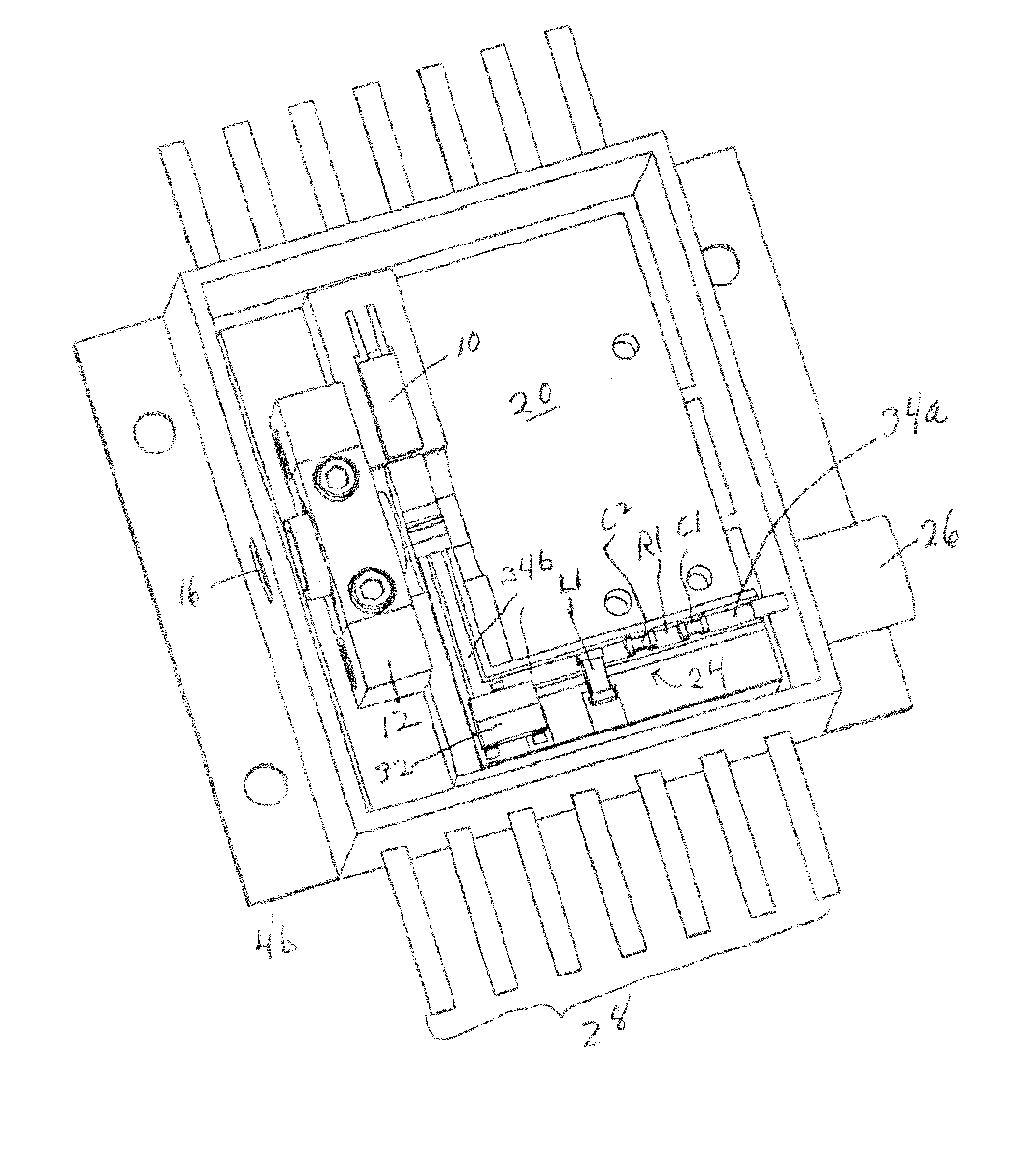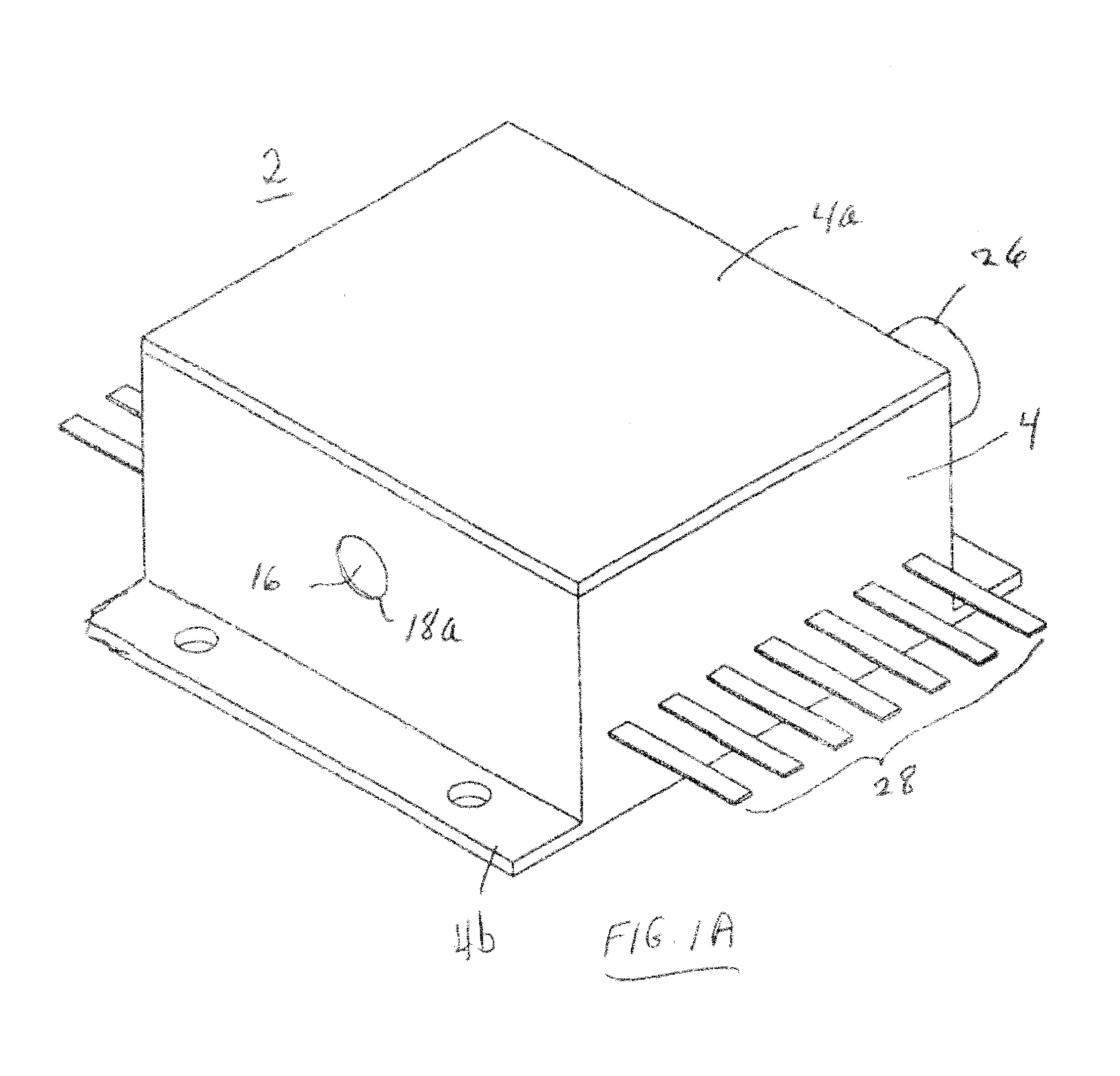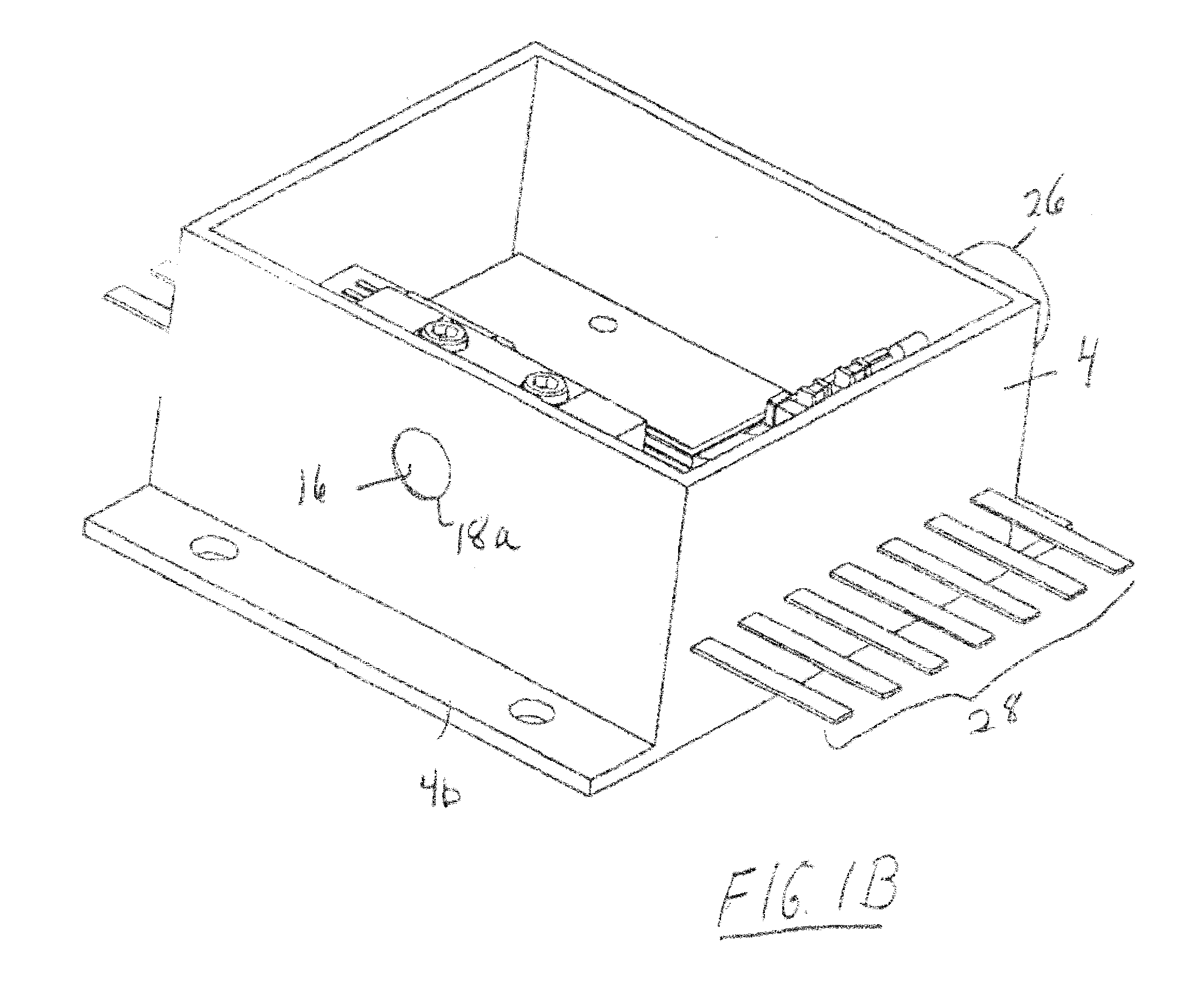Compact mid-ir laser
a laser and mid-infrared technology, applied in semiconductor lasers, instruments, lenses, etc., can solve the problems of limited actual application of mir lasers, hampered, limited auger recombination, etc., and achieve enhanced cooling techniques, high integration and packaging, and light weight
- Summary
- Abstract
- Description
- Claims
- Application Information
AI Technical Summary
Benefits of technology
Problems solved by technology
Method used
Image
Examples
Embodiment Construction
[0041]FIGS. 1A-1C show perspective views of a MIR laser device 2 in accordance with a first embodiment of the invention. FIG. 1A shows the MIR laser device 2 with the housing 4 including the lid or top cover plate 4a and mounting flanges 4b. FIGS. 1B and 1C show the MIR laser device 2 with the lid 4a removed, thus exposing the interior components. FIGS. 2A and 2B show exploded perspective, views of the various components of the MIR laser. FIGS. 3 and 4A show plan and side views respectively of the laser device and FIG. 4B shows an enlarged portion of FIG. 4A.
[0042]As may be seen from these figures, the MIR laser device is seen to include a laser gain medium 6 mounted on a high thermal conductivity sub-mount 8. There is further provided a temperature sensor 10, a lens holder 12, lens mount 13, output lens 14, and window 16. An output aperture 18a is provided in the side of the housing 4 with the window positioned therein. The MIR laser device is also comprised a heat spreader 20, coo...
PUM
 Login to View More
Login to View More Abstract
Description
Claims
Application Information
 Login to View More
Login to View More - R&D
- Intellectual Property
- Life Sciences
- Materials
- Tech Scout
- Unparalleled Data Quality
- Higher Quality Content
- 60% Fewer Hallucinations
Browse by: Latest US Patents, China's latest patents, Technical Efficacy Thesaurus, Application Domain, Technology Topic, Popular Technical Reports.
© 2025 PatSnap. All rights reserved.Legal|Privacy policy|Modern Slavery Act Transparency Statement|Sitemap|About US| Contact US: help@patsnap.com



